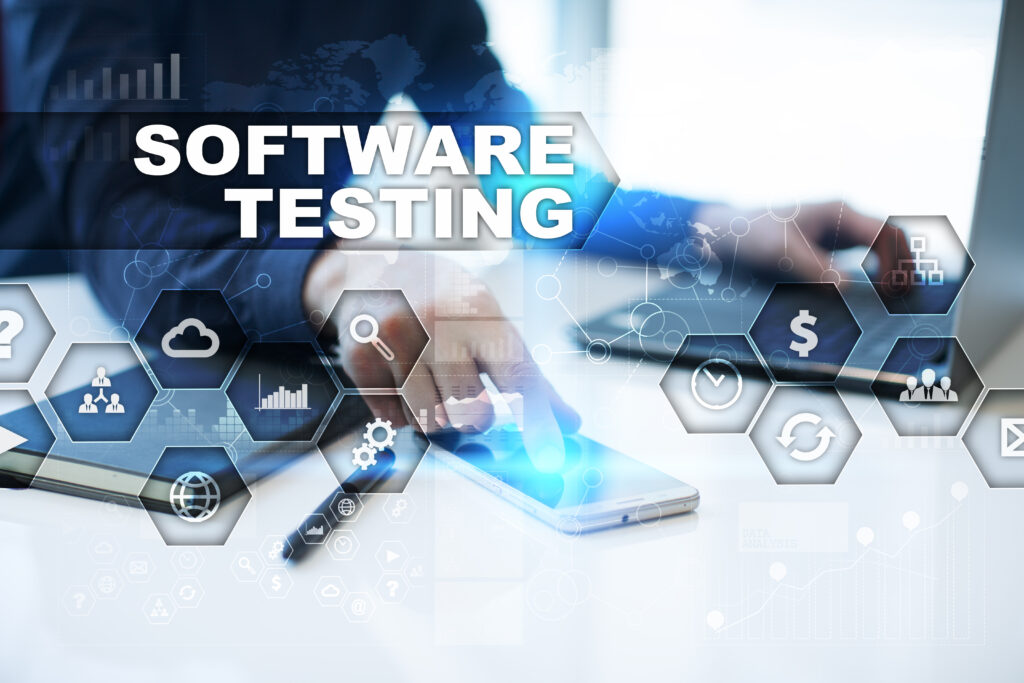- Email: info [at] cyber72.com
- 6767560 Tel Aviv, Israel

Last updated: Jan 25, 2024
As digital data storage continues to grow exponentially, the prevalence of cyber breaches follows suit. Businesses of all sizes must remain vigilant, constantly working to keep their systems secure. Studies indicate that automated penetration testing is among the most effective methods for staying current with cybersecurity advancements, as it provides swift insights into potential threats without sacrificing quality or precision. In this article, we will delve into the advantages of utilizing automated penetration testing for bolstering corporate security – from comprehending the concept to revealing its numerous benefits. Continue reading to uncover the impressive capabilities of automated penetration tests in safeguarding business data!

Automated Penetration Testing: A Cornerstone in Modern Cybersecurity
In the dynamic world of cybersecurity, automated penetration testing has emerged as a critical component for safeguarding digital assets. This advanced technique, commonly known as automated pen testing, leverages software tools and algorithms to simulate cyberattacks on computer systems, networks, or applications. Its primary aim is to uncover vulnerabilities that could be exploited by malicious actors, thereby providing an opportunity for organizations to fortify their defenses proactively.
Automated pen testing represents a significant evolution from traditional security practices. In the past, cybersecurity primarily focused on creating robust barriers against external threats. However, as cyber threats have become more sophisticated, the need for proactive and dynamic testing methodologies has become paramount. Automated penetration testing fits this need perfectly, offering a way to regularly test and evaluate the effectiveness of security measures in real-time.
This method’s significance lies in its ability to adapt to the rapidly changing landscape of cyber threats. By using automated tools, organizations can simulate a wide range of attack scenarios that reflect the latest hacking techniques. This is crucial in an era where threats evolve faster than ever, necessitating a security approach that is both agile and comprehensive.
Automated penetration testing plays a multifaceted role in cybersecurity. It is not just about identifying vulnerabilities; it’s about understanding the potential impact of these vulnerabilities on an organization’s security posture. This testing allows businesses to gain insights into how an attacker could exploit their systems and what the potential consequences could be. Such insights are invaluable in developing a robust and responsive cybersecurity strategy.
Additionally, automated pen testing contributes significantly to the development of a security-centric culture within organizations. It emphasizes the importance of continuous vigilance and improvement, encouraging businesses to stay ahead of potential security threats. By routinely conducting these tests, organizations can ensure that their security measures are not only up to date but also effective against the latest threats.
In summary, automated penetration testing is a vital tool in the arsenal of modern cybersecurity. Its ability to rapidly identify and assess vulnerabilities makes it an indispensable part of any organization’s security strategy. As we delve deeper into the workings of this innovative approach, its value in protecting digital infrastructures becomes even more apparent.

Automated penetration testing, an intricate and systematic approach, involves several key stages, each playing a vital role in the overall process. Understanding these stages not only demystifies how automated pen testing functions but also highlights its comprehensive nature in identifying and addressing cybersecurity vulnerabilities.
The initial phase, planning and preparation, is pivotal in setting the stage for successful testing. This involves defining clear objectives, scope, and targets for the penetration test. Objectives typically encompass identifying vulnerabilities, assessing the impact of potential breaches, and testing the effectiveness of current security measures. Determining the scope involves specifying which systems, networks, or applications will be tested, ensuring that the testing remains focused and relevant to the organization’s specific needs. This stage also involves understanding legal and compliance requirements to ensure that the testing adheres to ethical standards and regulatory frameworks.
Following the preparatory stage, automated tools commence scanning the targeted systems. This involves identifying live hosts, open ports, and running services, which lay the groundwork for further analysis. Scanning can be of two types – static, where the software’s code is examined without executing the program, and dynamic, where the software is analyzed in a running state. The enumeration process follows, which involves collecting detailed information about these identified systems, such as operating systems, software versions, and network configurations. This detailed mapping is crucial as it helps to identify potential vulnerabilities that could be exploited in subsequent stages.
In this phase, automated tools attempt to exploit identified vulnerabilities, mimicking the actions of potential attackers. This involves the execution of various attacks, such as SQL injection, cross-site scripting (XSS), and remote code execution, to test the system’s resilience against intrusions. Successful exploitation can reveal significant weaknesses in the security setup, providing concrete evidence of what a malicious attacker could achieve. It’s important to note that these actions are conducted in a controlled environment to prevent actual damage to the systems.
After gaining access, the focus shifts to understanding the potential impact. In this phase, automated tools may seek to maintain access, escalate privileges, or extract sensitive data, simulating a real attacker’s post-breach actions. This stage is critical in assessing the severity of each vulnerability by understanding what an attacker could do post-exploitation, such as accessing confidential data, disrupting services, or using the compromised system as a launchpad for attacks on other internal systems.
The final phase involves analyzing the data gathered from the testing and compiling it into comprehensive reports. These reports detail the vulnerabilities discovered, the methods used to exploit them, and the potential impact on the organization. More importantly, they provide actionable recommendations on how to remediate the identified issues and enhance the overall security posture. This stage transforms the raw data from the testing into meaningful insights, enabling organizations to make informed decisions to strengthen their cybersecurity defenses.
While automated penetration testing is efficient and comprehensive, it is not a standalone solution. It is most effective when used in conjunction with manual testing conducted by skilled professionals. Automated tools are excellent at identifying common vulnerabilities and weaknesses, but they may not effectively test complex, logic-based scenarios that require human ingenuity and experience. Therefore, a balanced approach that leverages both automated and manual testing can provide the most thorough assessment of an organization’s cybersecurity resilience.
In conclusion, the process of automated penetration testing is a sophisticated blend of technology, strategy, and analysis. Each stage plays a critical role in ensuring that the testing is not only comprehensive but also relevant and actionable. As we delve further into the benefits of this approach, the reasons for its growing popularity in the cybersecurity realm become even clearer.
Automated penetration testing, an increasingly essential tool in the cybersecurity arsenal, offers a multitude of benefits. These advantages not only streamline the security assessment process but also enhance the overall security posture of an organization. Let’s delve into these benefits to understand why automated penetration testing is pivotal in today’s digital landscape.
One of the most significant advantages of automated penetration testing is its efficiency in terms of time and cost. Traditional manual testing methods can be time-consuming and labor-intensive, requiring skilled personnel to meticulously analyze and test various aspects of a system. Automated testing, in contrast, utilizes advanced software tools that can rapidly scan and identify vulnerabilities across a wide network or system. This accelerated process allows for frequent testing without the need for extensive manpower, leading to a reduction in the overall cost and resource allocation for security assessments.
Automated penetration tests can be conducted more frequently and consistently than manual tests. This regularity is crucial in a landscape where new vulnerabilities and threat vectors emerge continuously. Automated tools can quickly adapt to these changes, ensuring that an organization’s defenses are always tested against the latest threats. Moreover, automated testing can cover a broader range of scenarios and vulnerabilities than a manual tester might be able to in the same timeframe, resulting in a more comprehensive assessment of the system’s security.
Automated tools are programmed to follow specific protocols and checklists, ensuring that every test is performed with the same level of thoroughness and attention to detail. This consistency eliminates the possibility of human error or oversight, often a risk in manual testing. As a result, organizations can rely on the accuracy and consistency of the findings from automated penetration tests, leading to more reliable and actionable insights for improving their cybersecurity measures.
Automated penetration testing plays a critical role in strengthening an organization’s cybersecurity posture. By identifying and addressing vulnerabilities regularly, organizations can proactively mitigate potential threats before they are exploited by malicious actors. This preemptive approach is essential in a landscape where the cost and impact of cyber breaches continue to rise. Effective use of automated penetration testing means organizations are better prepared to defend against, and respond to, cyber threats, thereby enhancing their overall resilience.
In an era where data protection and privacy regulations are becoming increasingly stringent, automated penetration testing assists organizations in maintaining compliance. Regular security assessments ensure that vulnerabilities are identified and remediated promptly, an essential aspect of compliance with standards such as GDPR, HIPAA, and PCI DSS. By incorporating automated penetration testing into their security protocols, organizations can demonstrate their commitment to protecting sensitive data and adhering to regulatory requirements.
Finally, the integration of automated penetration testing into an organization’s security strategy fosters a culture of continuous improvement and vigilance. It sends a clear message about the importance placed on cybersecurity, encouraging employees and stakeholders to prioritize and be more aware of security in their daily operations. This security-centric culture is invaluable in building a robust and responsive defense against cyber threats.
In conclusion, the benefits of automated penetration testing are manifold. From enhancing efficiency and comprehensiveness to bolstering an organization’s cybersecurity posture and compliance, the advantages make it an indispensable tool for modern businesses. As we progress into examining who should utilize automated penetration testing, it becomes evident that this tool is not just beneficial but essential for organizations across various sectors.
Automated penetration testing is not a one-size-fits-all solution; its utilization varies significantly across different industries and organization sizes. Understanding which organizations can benefit the most from automated pen testing helps in tailoring the approach to meet specific security needs.
The utility of automated penetration testing transcends various sectors, ranging from finance and healthcare to government and education. In industries like finance and healthcare, where sensitive data is frequently processed, automated pen testing plays a crucial role in identifying vulnerabilities that could lead to data breaches. For government agencies, where national security and citizen data protection are paramount, these tests are integral in safeguarding against sophisticated cyber-attacks. Educational institutions, often housing significant amounts of research and personal data, also find automated pen testing essential in protecting their digital resources.
Automated penetration testing is equally relevant across different sizes of organizations. Small and Medium-sized Enterprises (SMEs), often lacking extensive in-house cybersecurity resources, can greatly benefit from the efficiency and cost-effectiveness of automated testing. For these smaller organizations, such testing offers a level of security expertise that might otherwise be unattainable. On the other hand, large enterprises, facing complex and extensive digital infrastructures, find value in automated pen testing for its ability to conduct comprehensive and regular assessments across a vast network of systems and applications.
In the financial sector, a major bank utilized automated penetration testing to identify vulnerabilities in its online banking platform, leading to significant enhancements in its security protocols. Similarly, a healthcare provider employed automated testing to ensure the protection of its patient data systems, aligning with HIPAA compliance requirements. These examples underscore the adaptability and necessity of automated pen testing across different domains.
Organizations dealing with emerging technologies, such as IoT and cloud services, along with e-commerce businesses, are also prime candidates for automated penetration testing. The rapid development and deployment of new technologies in these sectors make regular and comprehensive security assessments essential. Automated pen testing provides these businesses with the agility to keep pace with the evolving threat landscape.
In summary, the target audience for automated penetration testing is diverse, encompassing a wide range of industries and organization sizes. From ensuring compliance with regulatory standards to protecting sensitive information, automated pen testing is a key component in the cybersecurity strategies of various organizations.
In the realm of business, where cybersecurity threats loom large and the integrity of data is paramount, automated penetration testing emerges as a vital tool. Its role extends beyond mere vulnerability identification, significantly impacting various aspects of business operations and strategic decision-making.
Automated penetration testing is instrumental in fortifying a business’s security posture. By routinely identifying and addressing vulnerabilities, organizations can prevent potential exploits and breaches. This proactive approach to security not only protects critical data and systems but also bolsters the confidence of customers and stakeholders in the business’s ability to safeguard sensitive information. Enhanced security posture, in turn, translates to a competitive advantage in industries where data security is a primary concern.
One of the key advantages of automated penetration testing in a business context is its ability to optimize resources. By automating repetitive and labor-intensive aspects of security testing, businesses can allocate their human resources to more strategic tasks that require critical thinking and specialized expertise. This shift from manual labor to strategic roles not only improves operational efficiency but also enhances job satisfaction among cybersecurity professionals.
Moreover, automated testing provides rapid results, enabling businesses to quickly react to discovered vulnerabilities. This swift response is crucial in minimizing the window of opportunity for attackers and reducing the potential impact of security incidents.
The landscape of cybersecurity is constantly evolving, with new threats and technologies emerging at a rapid pace. Automated penetration testing equips businesses to stay abreast of these changes. These tools are regularly updated to include the latest threat intelligence and testing methodologies, ensuring that businesses are always prepared to face new types of cyber attacks.
This adaptability is particularly crucial for businesses involved in technology-driven sectors, such as fintech, e-commerce, and IoT, where the pace of innovation and associated risks are high. Automated penetration testing enables these businesses to quickly integrate and secure new technologies, maintaining a robust security posture amidst rapid digital transformation.
Beyond identifying technical vulnerabilities, automated penetration testing offers valuable insights that inform strategic decision-making. The data and reports generated from these tests provide a clear understanding of an organization’s security strengths and weaknesses. This information can guide investment decisions in cybersecurity infrastructure, staff training, and policy development, ensuring that resources are allocated effectively to areas with the highest risk or greatest need for improvement.
Numerous businesses across different industries have reaped the benefits of automated penetration testing. For instance, an e-commerce company used automated testing to regularly assess their online platforms, significantly reducing the incidence of data breaches and downtime. In another case, a multinational corporation employed automated pen testing to streamline its global cybersecurity operations, achieving a more uniform and efficient security posture across all its divisions.
Finally, the implementation of automated penetration testing fosters a culture of continuous improvement within businesses. It encourages a mindset where security is seen as an ongoing process rather than a one-time checklist item. This culture is essential for businesses to remain resilient in the face of evolving cyber threats and to maintain the trust of their customers and partners.
In conclusion, automated penetration testing is more than a technical tool; it’s a strategic asset for businesses. Its benefits extend from enhancing the security posture to optimizing resources and informing strategic decisions. As businesses continue to navigate the complex landscape of digital threats, automated penetration testing stands as a crucial ally in maintaining security and fostering growth.
In the ever-evolving landscape of cybersecurity, automated penetration testing has solidified its role as an indispensable tool for modern businesses. Its ability to efficiently, consistently, and comprehensively assess an organization’s vulnerabilities is unparalleled. This methodology does not just protect against current threats; it prepares businesses for the challenges of tomorrow’s digital world.
The journey through the intricacies of automated penetration testing underscores its multifaceted benefits. From enhancing security postures and optimizing resources to adapting to emerging threats and aiding strategic decision-making, automated pen testing is a cornerstone of effective cybersecurity strategies. The insights gleaned from this process empower businesses to make informed, proactive decisions, fortifying their defenses against the sophisticated cyber threats of today and tomorrow.
As we conclude, it’s clear that the adoption of automated penetration testing is not just a prudent choice but a necessary step for businesses aiming to safeguard their digital assets and maintain a competitive edge. In a world where cyber threats are a constant and ever-changing reality, embracing automated penetration testing is synonymous with embracing a secure, resilient future.